Finding the perfect dart weight can drastically improve your game; algemeen, lighter darts are more forgiving while heavier darts offer increased stability. This article dives deep into **experimenting with dart weight** to help you discover what works best for your throwing style and skill level. We’ll explore the impact of different weights, discuss how to test various options, and offer tips for adjusting your technique accordingly.
⚠️ Still Using Pen & Paper (Of een schoolbord)?! ⚠️
Stap in de toekomst! De Dart Teller -app behandelt alle scoren, stelt kassa voor, en volgt uw statistieken automatisch. It's easier than you think!
Probeer de Smart Dart Teller -app gratis!Klaar voor een upgrade? Klik hierboven!
Understanding Dart Weight and Its Impact
The weight of your dart is a crucial factor influencing its trajectory, stability, and overall feel in your hand. Darts are typically measured in grams, ranging from around 16 grams to the maximum legal weight of 50 grams. Most players find success within the 20-26 gram range, but personal preference plays a significant role. Understanding how weight affects your throw is the first step in **experimenting with dart weight** to find your sweet spot. Uiteindelijk, choosing the right dart equipment contributes to more consistent throws.
Here’s a breakdown of the general characteristics associated with different dart weights:
- Lighter Darts (16-22 grams): These darts require more force to throw, making them feel faster and potentially more erratic. They can be beneficial for players with a fast, snappy throwing motion and may also be easier on the arm for those who experience fatigue or injury.
- Medium Darts (22-26 grams): This is the most common weight range, offering a balance between control and stability. Many players find that medium-weight darts provide a good feel and allow for consistent accuracy.
- Heavier Darts (26-30 grams+): Heavier darts tend to fly straighter and are less susceptible to wobble, making them ideal for players with a smooth, controlled throwing motion. They can also be advantageous in windy conditions, providing greater resistance to external factors.
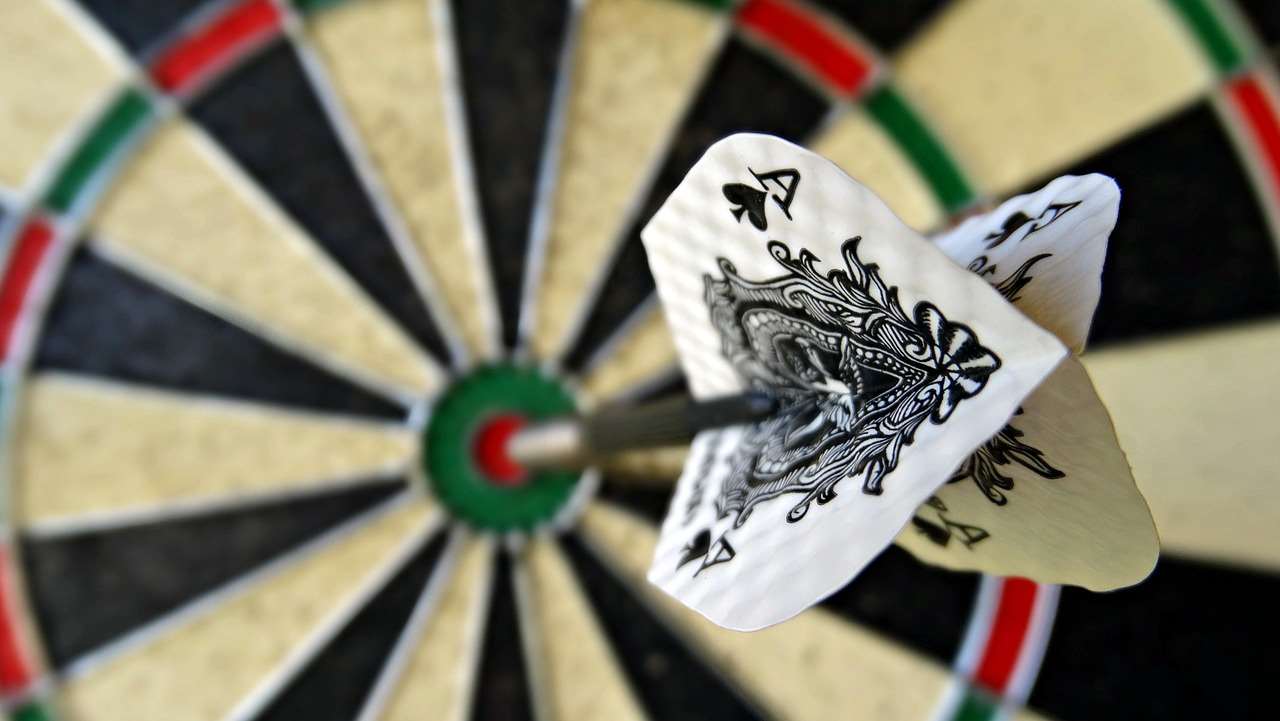
Practical Steps for Experimenting With Dart Weight
**Experimenting with dart weight** requires a systematic approach. You can’t just pick up a set of darts and expect to see immediate results. Here’s a step-by-step guide to help you find the ideal weight for your throwing style:
- Start with a Baseline: Begin with a weight that feels comfortable in your hand. If you’re unsure, A 23 or 24-gram dart is a good starting point. Throw several sets with this dart to establish a baseline for your accuracy and consistency.
- Incrementally Adjust: After establishing your baseline, try darts that are slightly lighter (1-2 grams) and slightly heavier (1-2 grams) than your starting point. Bijvoorbeeld, if you started with 24 grams, test 22-gram and 26-gram darts.
- Focus op gevoel: Pay close attention to how each weight feels in your hand and during your throw. Does the dart feel too light and uncontrollable? Or does it feel too heavy and cumbersome?
- Analyze Your Throw: Observe the trajectory of your darts. Are they wobbling excessively? Are they consistently landing high or low? These observations can provide valuable clues about whether a particular weight is suitable for your throwing style.
- Record Your Results: Keep a record of your scores and observations for each weight you test. This will help you identify patterns and make informed decisions.
- Consider Different Barrel Styles: While weight is important, the shape and grip of the barrel also play a significant role. Try different barrel styles within each weight range to find what feels most comfortable and natural.
Remember to be patient and persistent throughout this process. Finding the perfect dart weight can take time and experimentation.
Factors Influencing Your Dart Weight Choice
Several factors influence the ideal dart weight for an individual player. Deze omvatten:
- Throwing Style: As mentioned earlier, players with a fast, snappy throw may prefer lighter darts, while those with a smoother, more controlled throw may prefer heavier darts.
- Grip: The way you grip the dart can also influence the ideal weight. Players with a firm grip may find heavier darts more stable, while those with a lighter grip may prefer lighter darts.
- Arm Strength: Arm strength and stamina are also important considerations. Lighter darts require more arm speed, which can lead to fatigue over long periods of play.
- Persoonlijke voorkeur: Uiteindelijk, the best dart weight is the one that feels most comfortable and allows you to throw consistently and accurately. Don’t be afraid to experiment and find what works best for you, even if it goes against conventional wisdom.
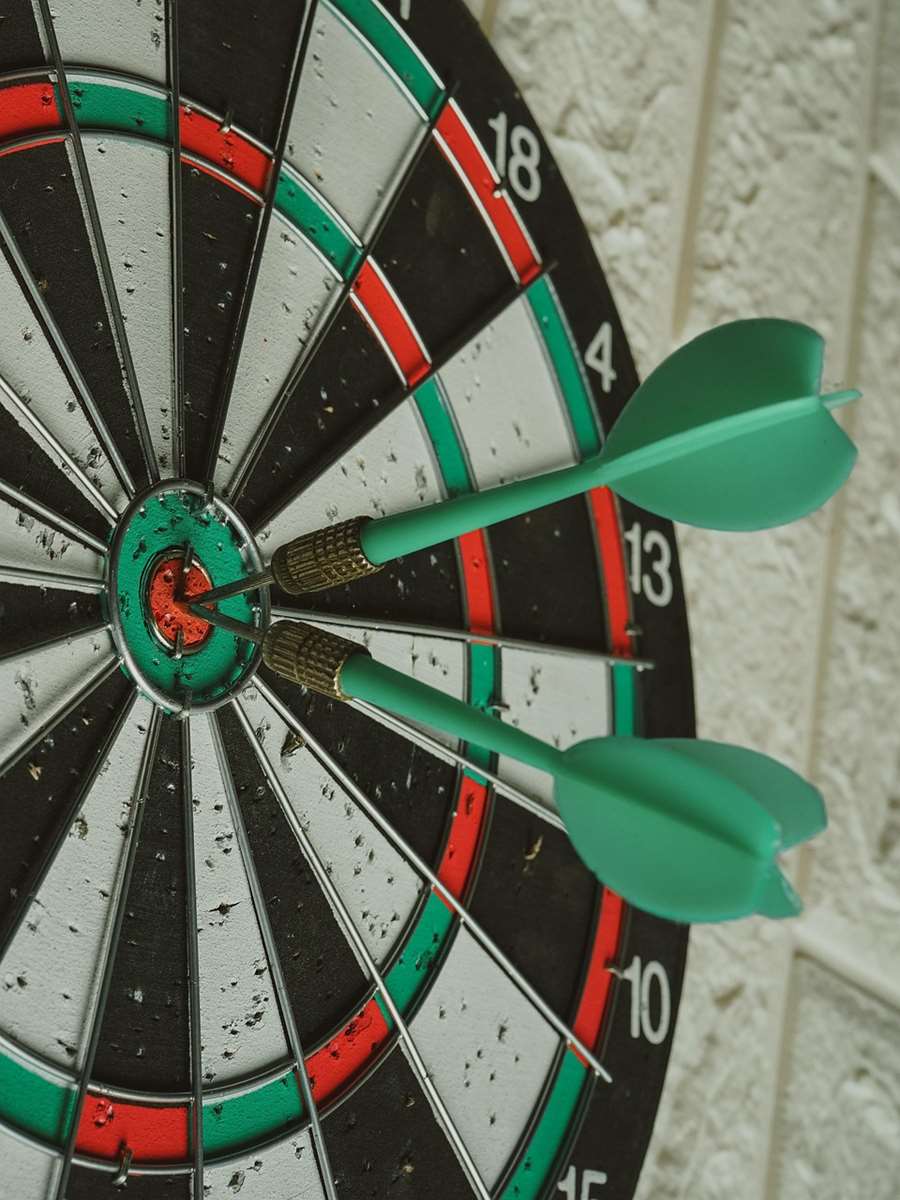
Considering Grip and Dart Weight
Your dart grip directly influences how you control the dart and transfer energy during your throw. A tighter grip can provide more control with heavier darts, preventing them from slipping or wobbling. Omgekeerd, a looser grip might work better with lighter darts, allowing for a more fluid and natural release. **Experimenting With Dart Weight** also means considering how well your chosen grip complements the dart’s weight.
Consider these points:
- Tight Grip, Heavier Dart: Offers stability and minimizes unwanted movement.
- Loose Grip, Lighter Dart: Promotes a smoother release and reduces strain.
Barrel Shape and Weight Distribution
Beyond the overall weight of the dart, the shape and weight distribution of the barrel also play a crucial role in its flight characteristics. Different barrel shapes can affect how the dart feels in your hand, how it releases, and how it flies through the air.
- Straight Barrels: Offer a consistent grip along the entire barrel and tend to fly straight.
- Torpedo Barrels: Tapered towards the front, often favored for front-weighted balance, can help the dart enter the board at a steeper angle.
- Bomb Barrels: Thickest in the middle, providing a large gripping surface and typically a more balanced feel.
The weight distribution within the barrel can also vary. Front-weighted darts tend to fly straighter and penetrate the board more easily, while center-weighted darts offer a more balanced feel and may be easier to control. Rear-weighted darts are less common but can be beneficial for players who prefer a more tail-heavy feel. Exploring these nuances is a key aspect of understanding how **experimenting with dart weight** interacts with dart design.
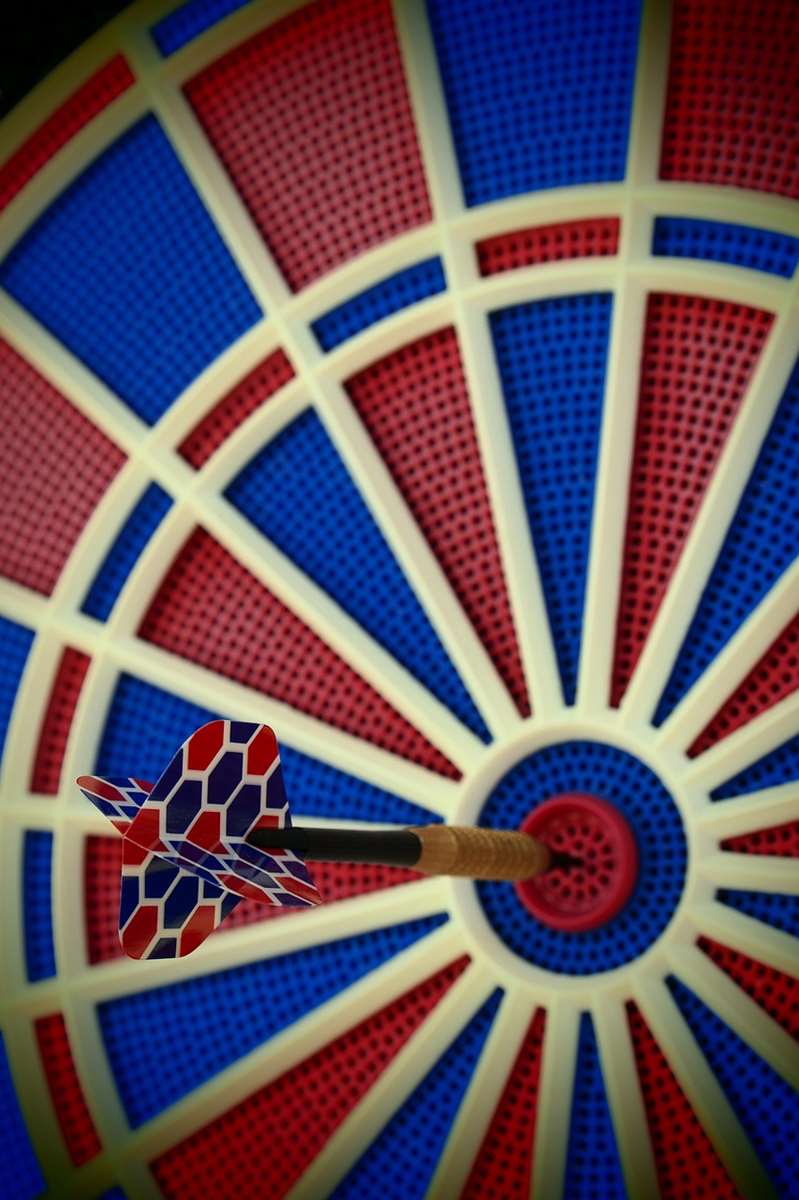
Adjusting Your Throwing Technique Based on Dart Weight
Once you’ve identified a promising dart weight, you may need to make adjustments to your throwing technique to optimize your accuracy and consistency. This might involve altering your stance, grip, arm motion, or release point.
Here are some potential adjustments to consider:
- Lighter Darts: You may need to increase your arm speed and generate more power to throw lighter darts effectively. Focus on a smooth, accelerating motion and a clean release.
- Heavier Darts: You may need to slow down your arm motion and focus on control and accuracy. Avoid using excessive force and concentrate on a consistent release point.
It’s important to practice regularly and make small, incremental adjustments to your technique until you find what works best for you. Consider working with a coach or experienced player to get feedback and identify areas for improvement. Keep in mind the principles of how to light your dartboard, as proper illumination can significantly impact your ability to see and adjust your throws effectively.
The Mental Aspect of Dart Weight
The mental aspect of darts is often overlooked, but it plays a crucial role in performance. Your confidence and mental focus can be significantly affected by the weight of your darts. If you feel uncomfortable or unsure about your darts, it will likely impact your throwing accuracy.
Choosing a dart weight that you feel confident in is essential for maintaining a positive mental state. When you step up to the oche, you should feel comfortable and in control, knowing that your darts are well-suited to your throwing style. If you’re constantly second-guessing your darts, it will be difficult to maintain focus and achieve your full potential.
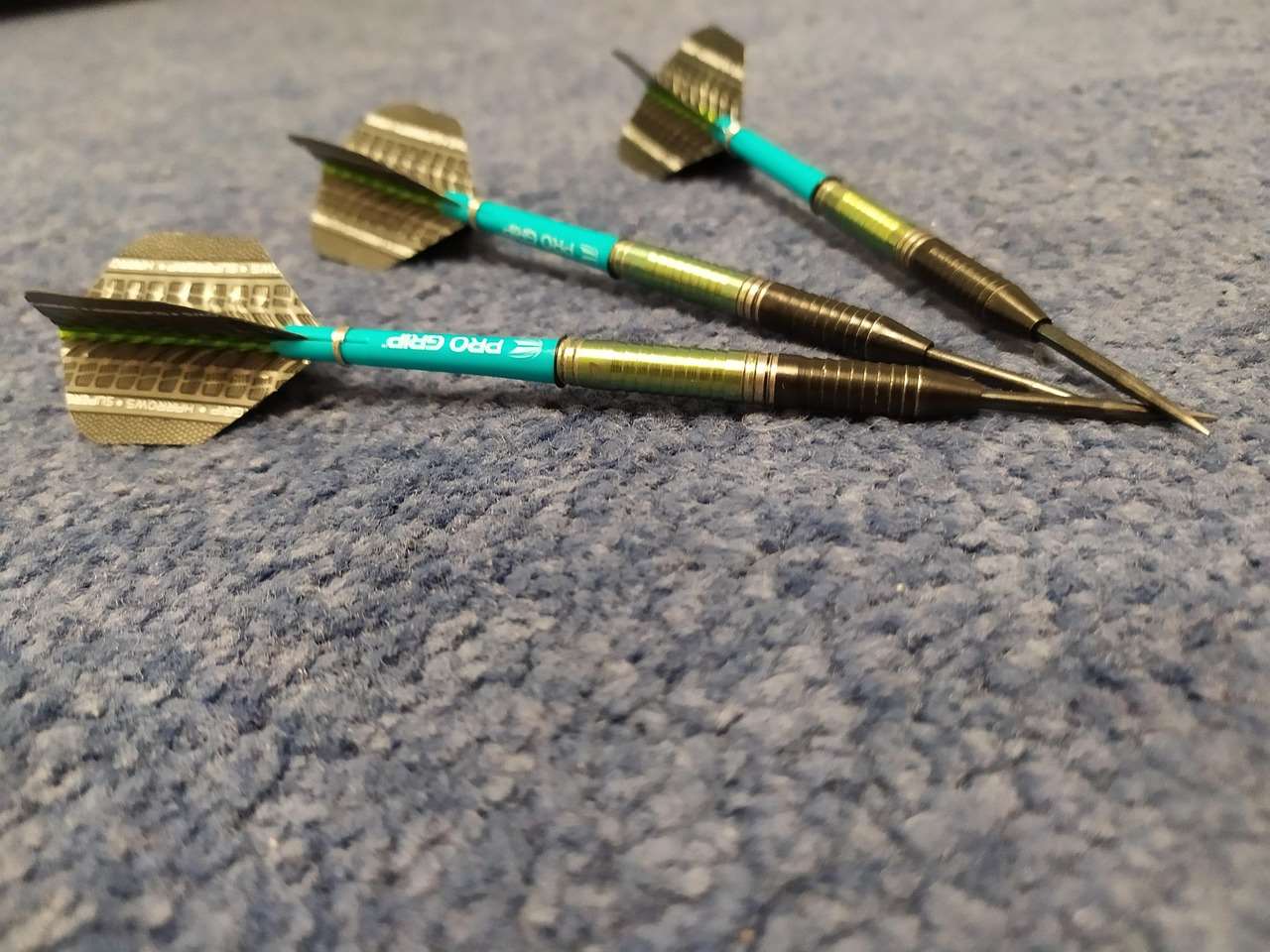
Beyond Grams: The Importance of Balance and Center of Gravity
While grams provide a numerical measure of dart weight, it’s equally important to consider the dart’s balance and center of gravity. A dart might weigh 24 grams, but if its weight is heavily concentrated at the front (front-weighted), it will behave very differently compared to a 24-gram dart with a balanced center or one that’s back-weighted.
Understanding and experimenting with different weight distributions can lead to significant improvements in your game. Front-weighted darts, for example, tend to fly more directly and can be advantageous for players seeking a straighter trajectory. Darts with a center of gravity towards the back might offer increased stability and a smoother feel in the hand. When **experimenting with dart weight**, pay attention not only to the overall grams but also to how the weight is distributed throughout the dart’s barrel. This aspect interacts directly with your grip and release, influencing the final flight path.
Fine-Tuning Your Setup: Stems, Flights, and Dart Weight Synergy
The weight of your darts is just one piece of the puzzle. Stems and flights also play a significant role in dart trajectory and stability. Lighter darts may benefit from shorter stems and smaller flights, while heavier darts may require longer stems and larger flights to maintain stability.
Consider the following guidelines:
- Stem Length: Longer stems generally increase stability, while shorter stems can improve accuracy.
- Flight Shape: Larger flights provide more drag, which can slow down the dart and reduce wobble. Smaller flights offer less drag and can increase speed.
**Experimenting with dart weight** shouldn’t be isolated. It’s crucial to consider how your dart weight interacts with your choice of stems and flights to create a balanced and optimized setup. The ideal combination will depend on your throwing style and personal preferences.
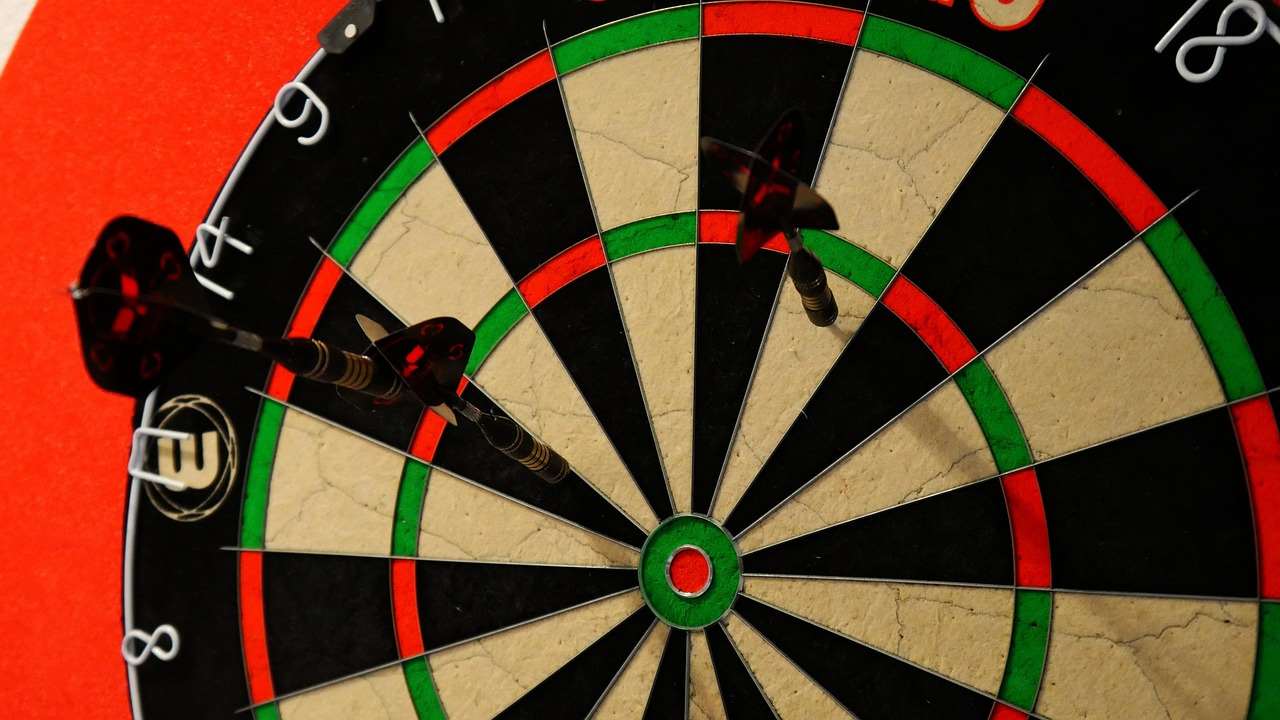
When to Change Your Dart Weight
Even after settling on a particular dart weight, there might be times when you consider changing it again. Here are some scenarios where a change in dart weight might be beneficial:
- Changes in Throwing Style: If you consciously alter your throwing technique, a different dart weight might become more suitable.
- Physical Changes: Changes in arm strength or physical condition could warrant adjusting your dart weight for comfort and performance.
- Plateau in Performance: If you reach a plateau in your progress despite consistent practice, experimenting with a different weight could help break through the barrier.
- Injury Recovery: Following an arm injury, a lighter dart might be necessary to reduce strain and allow for a smoother recovery process.
Remember that **experimenting with dart weight** is a continuous process. Don’t be afraid to revisit your choices and make adjustments as needed to optimize your game. Good lighting is essential for consistent performance, ontdekken best dartboard lighting systems and discover the range of options.
Conclusie: Embrace Experimentation for Darting Success
**Experimenting with dart weight** is a journey of self-discovery that can significantly improve your dart game. By understanding the impact of different weights, systematically testing various options, and adjusting your technique accordingly, you can find the perfect dart weight that unlocks your full potential. Remember to consider your throwing style, grip, arm strength, en persoonlijke voorkeur, and don’t be afraid to experiment with different barrel shapes, stems, and flights to fine-tune your setup. Take the time to experiment with dart weight and find what works best for *you*! Nu, go try out these techniques and elevate your game!
Hoi, Ik ben Dieter, En ik heb Dartcounter gemaakt (Dartcounterapp.com). Mijn motivatie was geen darts -expert - helemaal tegenovergestelde! Toen ik voor het eerst begon te spelen, Ik hield van het spel, maar vond het moeilijk en afleidend om nauwkeurige scores te houden en statistieken te volgen.
Ik dacht dat ik niet de enige kon zijn die hiermee worstelde. Dus, Ik besloot om een oplossing te bouwen: een eenvoudig te gebruiken applicatie die iedereen, Ongeacht hun ervaringsniveau, zou kunnen gebruiken om moeiteloos te scoren.
Mijn doel voor Dartcounter was eenvoudig: Laat de app de nummers afhandelen - het scoren, de gemiddelden, de statistieken, Zelfs checkout suggesties - zodat spelers puur kunnen richten op hun worp en genieten van het spel. Het begon als een manier om het probleem van mijn eigen beginners op te lossen, En ik ben heel blij dat het is uitgegroeid tot een nuttig hulpmiddel voor de bredere darts -community.